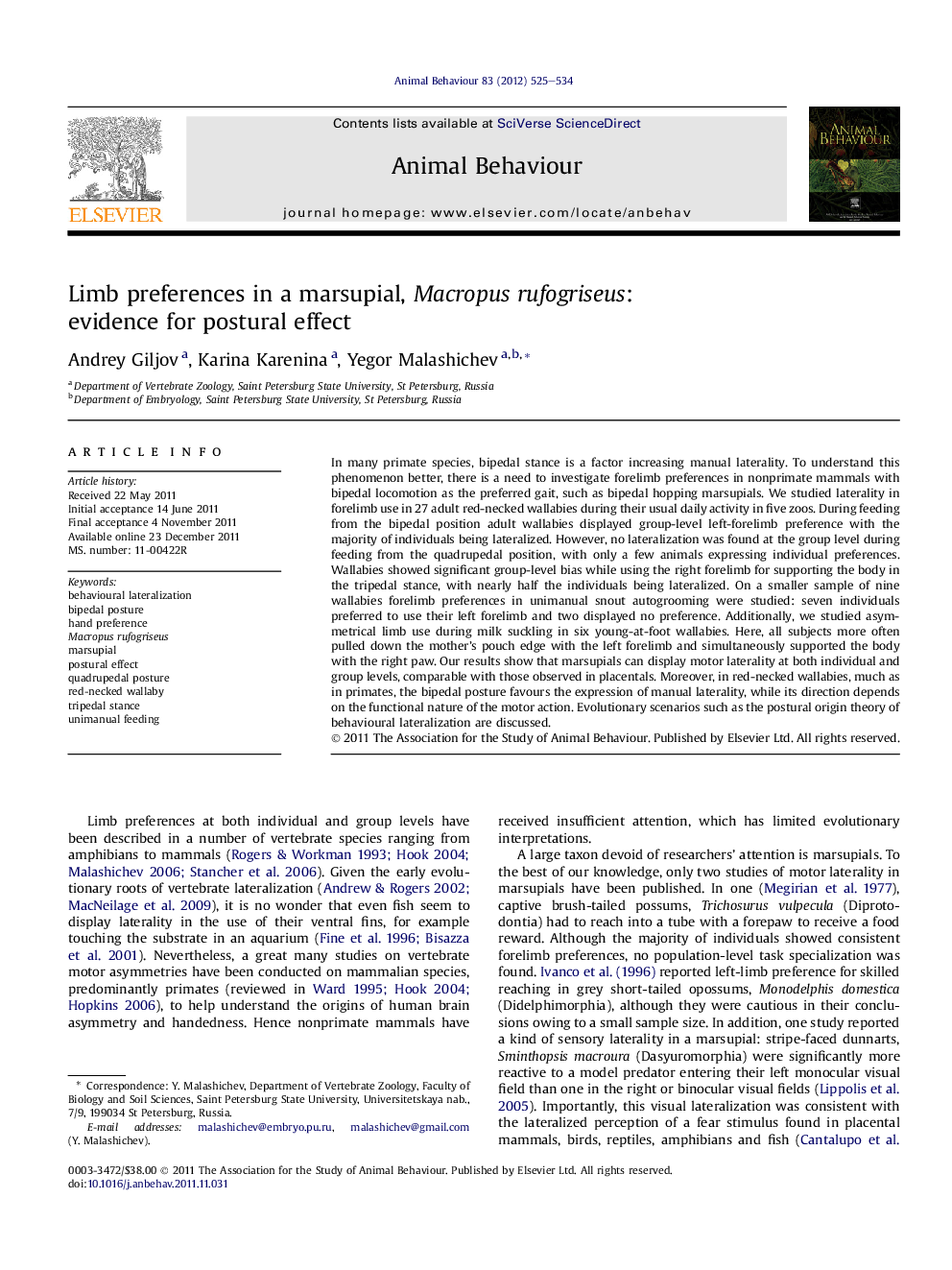| کد مقاله | کد نشریه | سال انتشار | مقاله انگلیسی | نسخه تمام متن |
|---|---|---|---|---|
| 2416733 | 1104293 | 2012 | 10 صفحه PDF | دانلود رایگان |

In many primate species, bipedal stance is a factor increasing manual laterality. To understand this phenomenon better, there is a need to investigate forelimb preferences in nonprimate mammals with bipedal locomotion as the preferred gait, such as bipedal hopping marsupials. We studied laterality in forelimb use in 27 adult red-necked wallabies during their usual daily activity in five zoos. During feeding from the bipedal position adult wallabies displayed group-level left-forelimb preference with the majority of individuals being lateralized. However, no lateralization was found at the group level during feeding from the quadrupedal position, with only a few animals expressing individual preferences. Wallabies showed significant group-level bias while using the right forelimb for supporting the body in the tripedal stance, with nearly half the individuals being lateralized. On a smaller sample of nine wallabies forelimb preferences in unimanual snout autogrooming were studied: seven individuals preferred to use their left forelimb and two displayed no preference. Additionally, we studied asymmetrical limb use during milk suckling in six young-at-foot wallabies. Here, all subjects more often pulled down the mother’s pouch edge with the left forelimb and simultaneously supported the body with the right paw. Our results show that marsupials can display motor laterality at both individual and group levels, comparable with those observed in placentals. Moreover, in red-necked wallabies, much as in primates, the bipedal posture favours the expression of manual laterality, while its direction depends on the functional nature of the motor action. Evolutionary scenarios such as the postural origin theory of behavioural lateralization are discussed.
► We studied manual preferences in a bipedal hopping marsupial, the red-necked wallaby.
► Wallabies showed one-hand preference when feeding from bipedal, but not quadrupedal stance.
► The group-level laterality was also seen at tripedal stance and autogrooming.
► Adult and young animals showed a similar laterality pattern with the level comparable to primates.
► Bipedal posture favours the expression of manual laterality both in marsupials and primates.
Journal: Animal Behaviour - Volume 83, Issue 2, February 2012, Pages 525–534